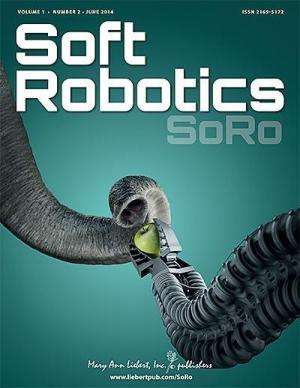Researchers develop untethered, autonomous soft robot

Imagine a non-rigid, shape-changing robot that walks on four "legs," can operate without the constraints of a tether, and can function in a snowstorm, move through puddles of water, and even withstand limited exposure to flames. Harvard advanced materials chemist George Whitesides, PhD and colleagues describe the mobile, autonomous robot they have created in Soft Robotics.
In "A Resilient, Untethered Soft Robot," Michael Tolley, PhD and a multidisciplinary team of coauthors from the School of Engineering and Applied Sciences, Wyss Institute for Biologically Inspired Engineering, and Department of Chemistry and Chemical Biology, at Harvard University (Cambridge, MA), and the School of Mechanical and Aerospace Engineering at Cornell University (Ithaca, NY), detail the innovative composite materials, design features, and fabrication methods they used to develop a soft robot capable of functioning for several hours using a battery pack or for longer periods with a light-weight electrical tether, and able to carry payloads of up to 8 kg.
"This paper marks the emergence of soft robot technology from the research lab into the real world," says Editor-in-Chief Barry A. Trimmer, PhD, who directs the Neuromechanics and Biomimetic Devices Laboratory at Tufts University (Medford, MA).
More information: The article is available on the Soft Robotics website.
Provided by Mary Ann Liebert, Inc




















